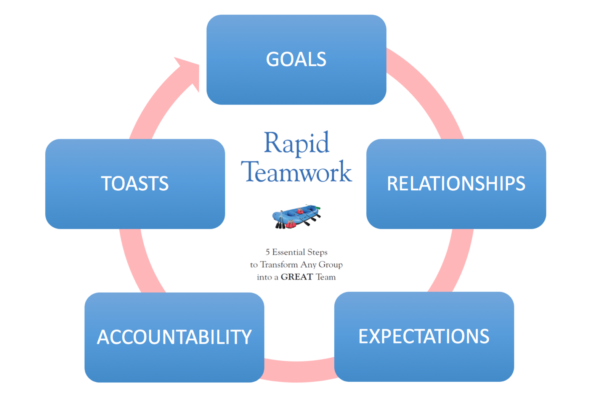 Everybody likes to set goals…
Everybody likes to set goals…
But at the end of the season, do you always accomplish them?
As a team building event facilitator, I have learned that most teams do not… because they start the journey without preparing for the difficulties and issues that will likely be experienced along the way.
As leaders, the reality is that you have a choice – you can choose to look FORWARD WITH CONCERN or you can later look BACKWARD WITH REGRET!
Too often, team leaders look back on projects that have gone wrong and ask themselves, “What happened?” and / or “Why did it not go the way we expected?”
This is the traditional post-mortem – after the project is DEAD.
But some leaders, rather than looking back with regretful questions, ARE INTENTIONAL ABOUT looking forward with anticipatory questions.
You can invest time with your people in doing a pre-mortem to put together a plan to address the bumps in the road or threats you might encounter that would keep you from achieving the goals you have identified as important.
Take time early on to forecast why or how you might fail – and then prepare for that!
Think about it – after your season has tanked is the wrong time to discuss problems!
So what can you do to ensure your team is prepared for issues that might sabotage your success?
Here are three steps for a Team PreMortem:
Step 1: Ask Your Team to Meet and List Every Possible Problem They can Imagine Might Keep You From Reaching Your Goal.
Your only job during the first step of your pre-mortem is to write down every problem that has even a remote possibility to derail your project.
In this first part, no problem is too crazy and the group should feel free to share things that might sound silly or unlikely…
But WRITE DOWN EVERY IDEA. Even if you are doing this alone, the act of writing it down is important to record possible obstacles.
This is the brainstorming part of the activity, and you should encourage your team to identify ALL possible threats that might sabotage your success.
- What if somebody gets hurt?
- What if there is a zombie apocalypse?
- What if the weather keeps us from practicing?
Your main goal at this point is to record an exhaustive list of things that might go wrong.
The only things you DON”T want your people to discuss or suggest are SOLUTIONS.
That would shift their focus, and would be detrimental to the process.
With a team of talented and determined people, this will be harder to manage than you might think… but stick with it until you have a long list!
Step 2: Have the Team Identify the Top 5-7 Problems on the List.
This is where you take a look at prioritizing the massive list of possible issues that could keep your team from achieving its goals.
But there is an EASY way to choose your top 5-7.
First – Write down ALL ideas on a large wall-sized white-board.
Then – Give each person on your team three post-it notes.
Have them write the number 1 on one post-it, 2 on another, and 3 on the last post-it.
Then – ERASE any problem that your team does not have control over (nuclear warheads going off during a game, etc.)
Then – ask them to place the #3 post-it next to the MOST dangerous issue that could derail your season’s success. Place the #2 post-it next to the next most dangerous problem. Then place the #1 post-it next to the issue that they think is third-most dangerous.
Next – add up to see which issues have the highest “score.”
The top 5-7 are what you will want to focus on for step 3 ; )
Step 3: Invest Time in Defining Solutions for the Most Dangerous Threats to Your Team’s Success.
Surprisingly, the last step is usually the EASIEST part of the activity.
Once you get problems (or potential problems) out into the sunshine, they begin to seem less scary – and far more manageable.
If “poor free throw shooting” is one of the top 5-7 problems, you can address that by defining a solution that will help your team to proactively DO SOMETHING.
It is important to emphasize to your team that a solution is not TRULY a solution without ACTION!
WRITE DOWN the “action items” team members need to complete….
Clarify what needs to get done using this format:
WHAT?
By WHO?
By WHEN?
This pre-mortem activity is useless without an actionable list of things they WILL DO to ensure that the possible problems don’t become season-threatening realities!
This is a chance for your team to participate in thinking ahead to ensure their success.
Once they OWN the issues and TAKE RESPONSIBILTIY for dealing with them, your team will be far more likely to achieve the goals you set!
If you want ore ideas on how to LEAD a TEAM, check out my book RAPID TEAMWORK.. It is an entertaining parable about how to transform a group of individuals into a committed team sing five proven steps…

